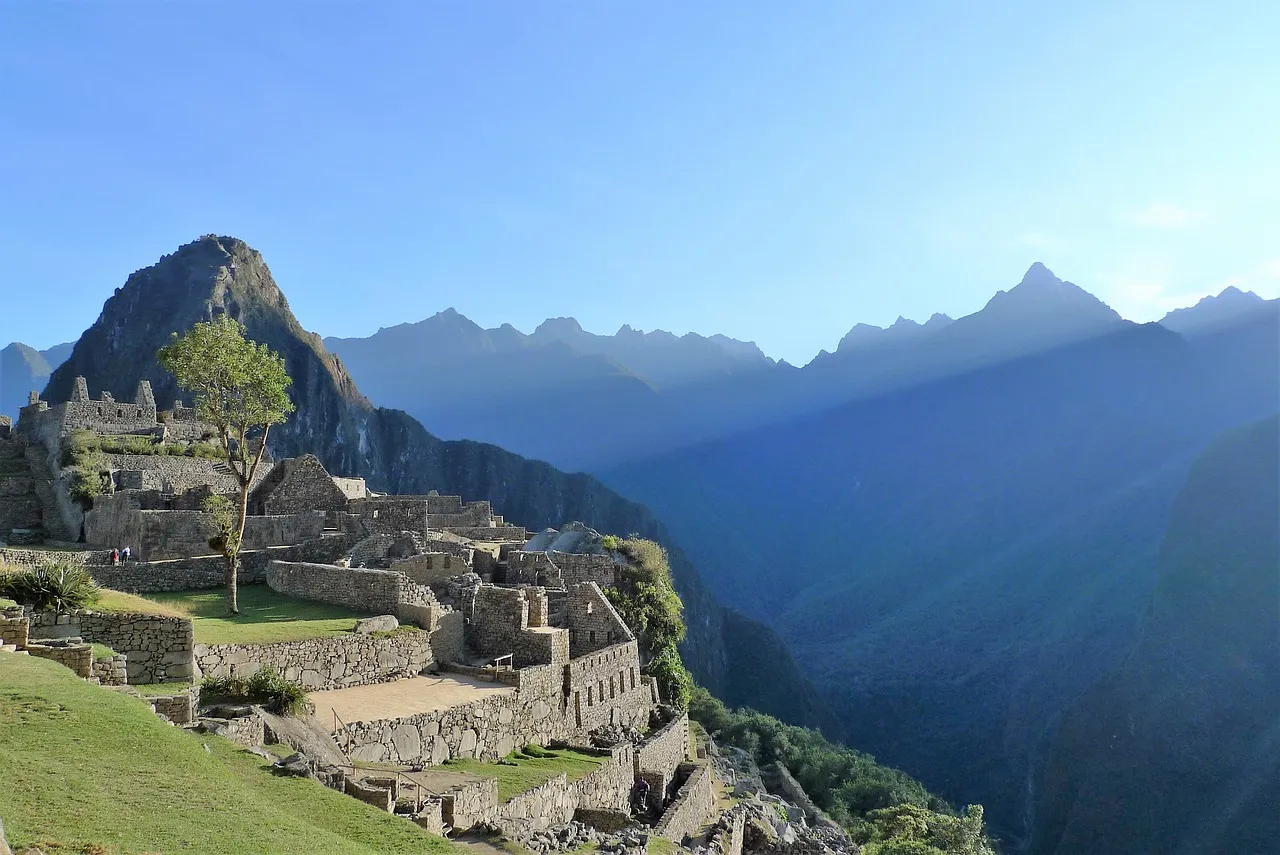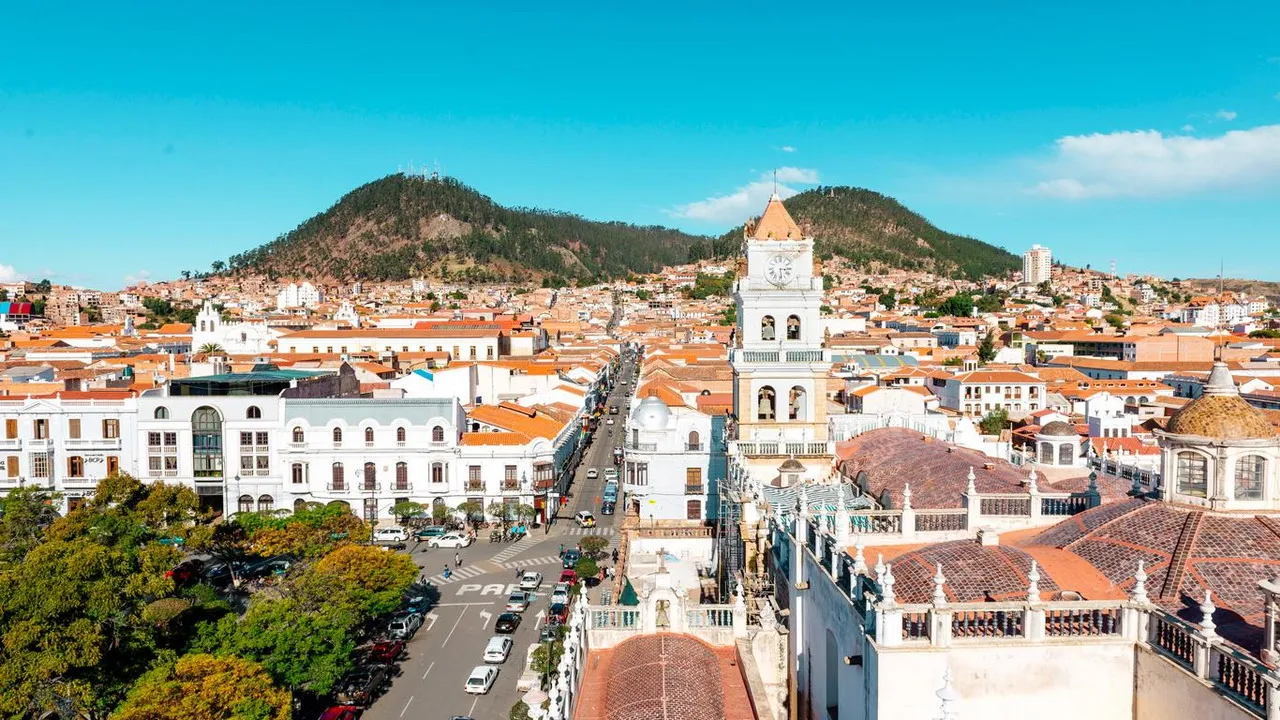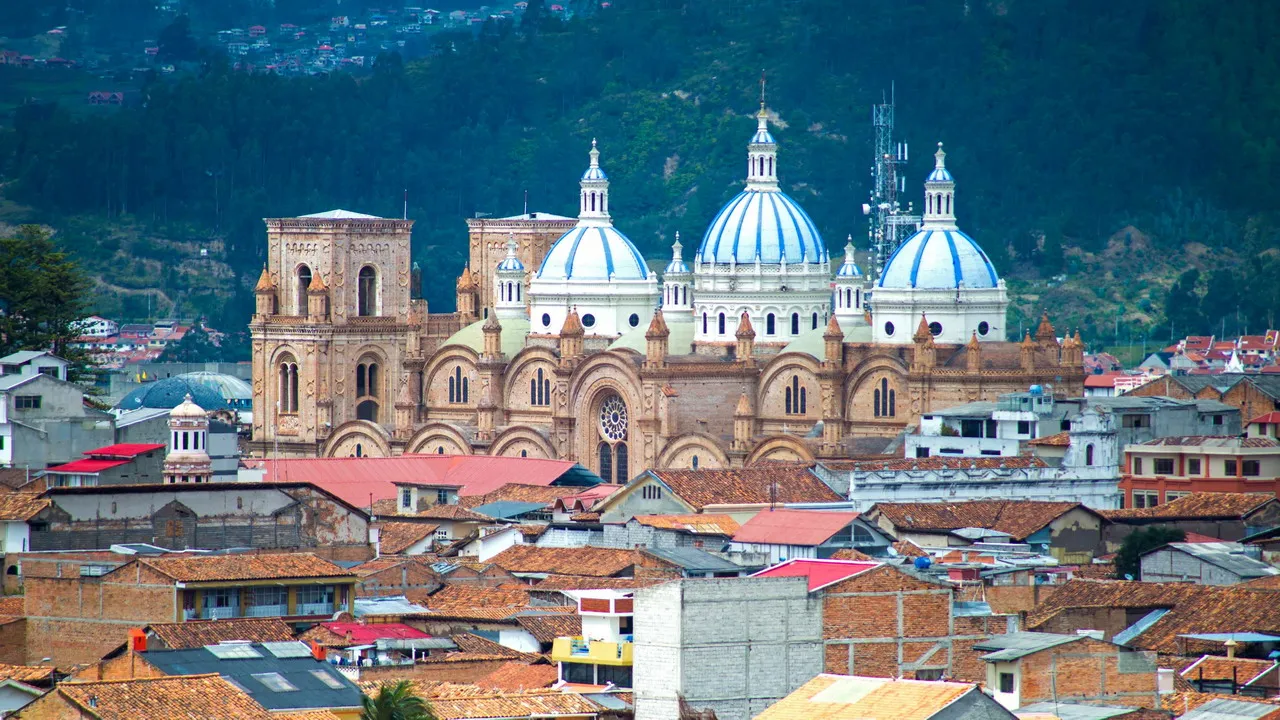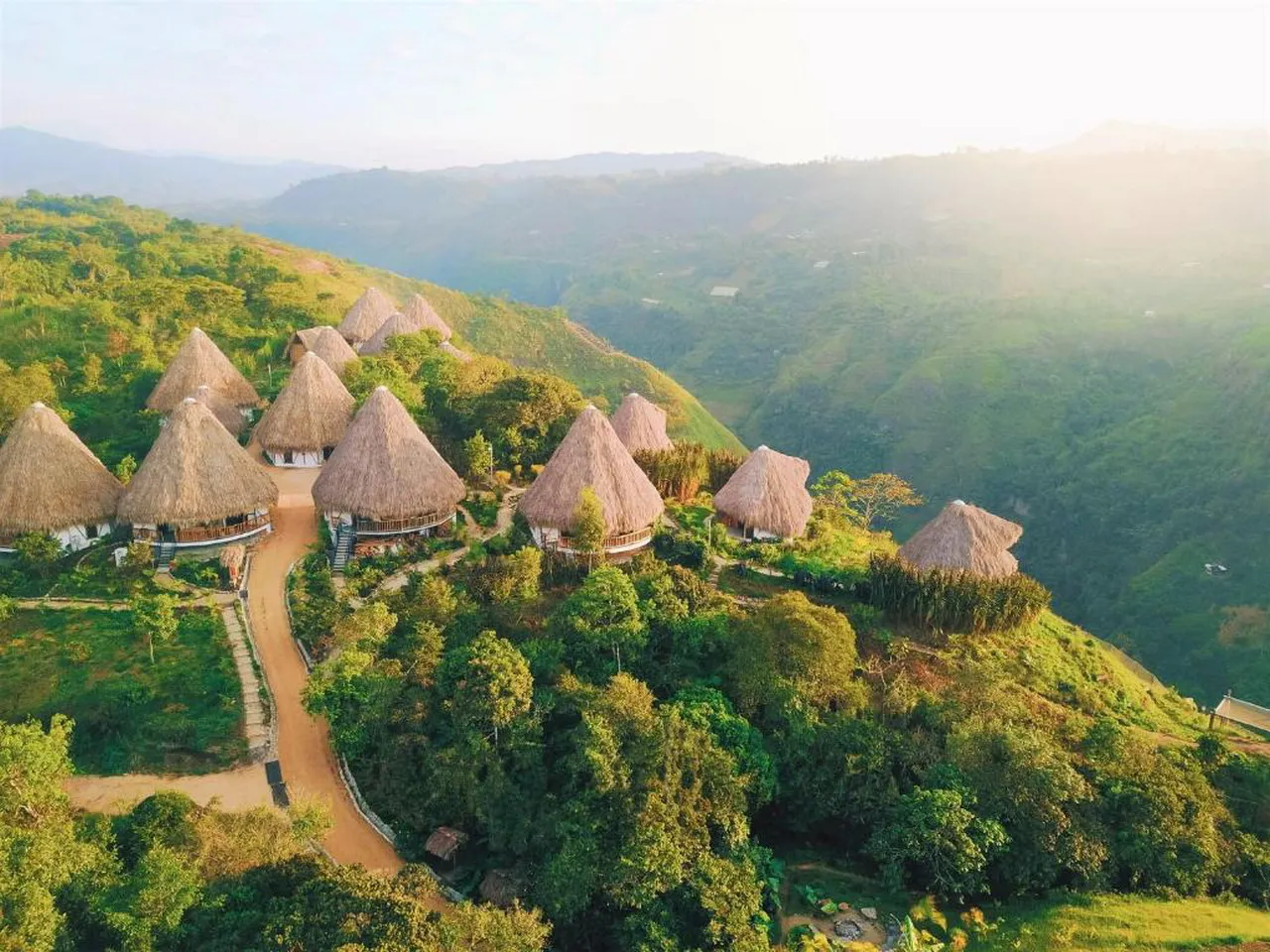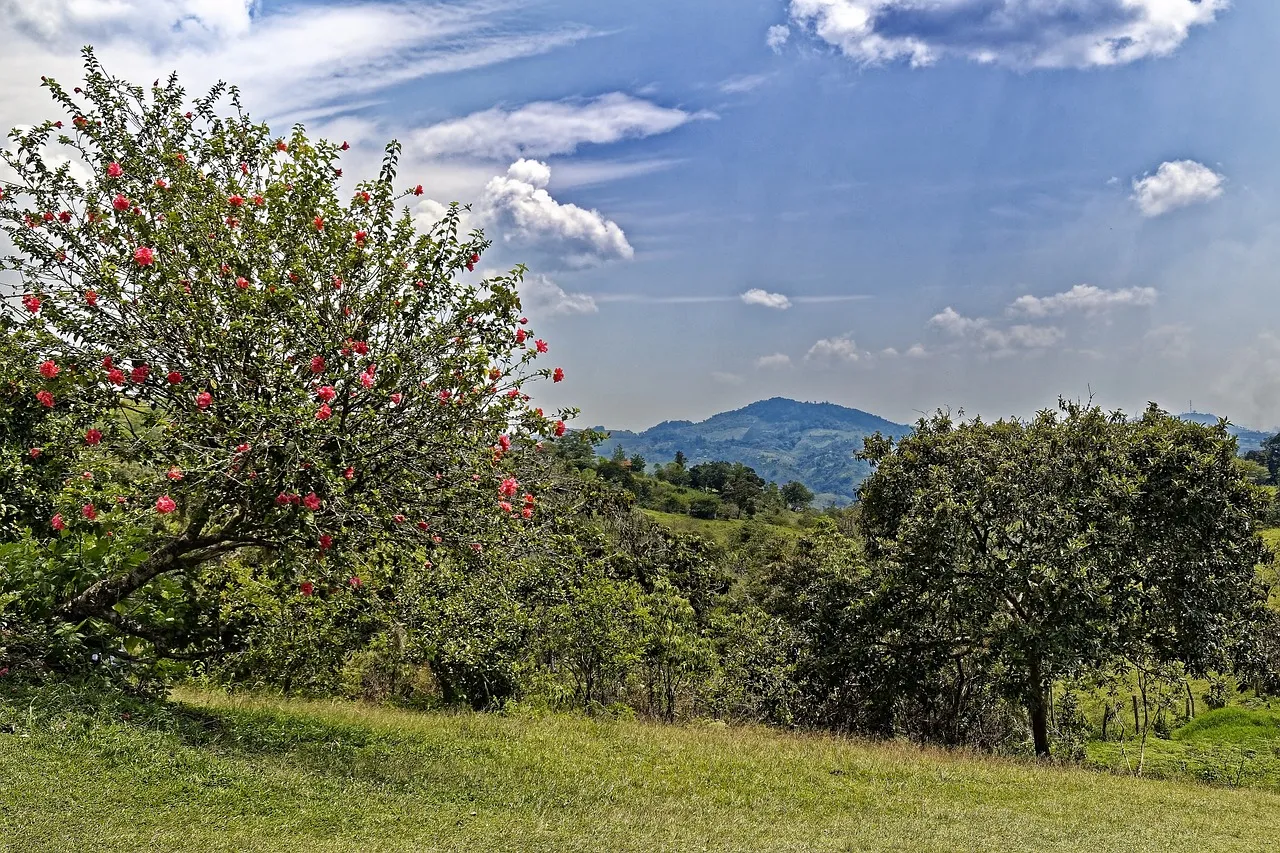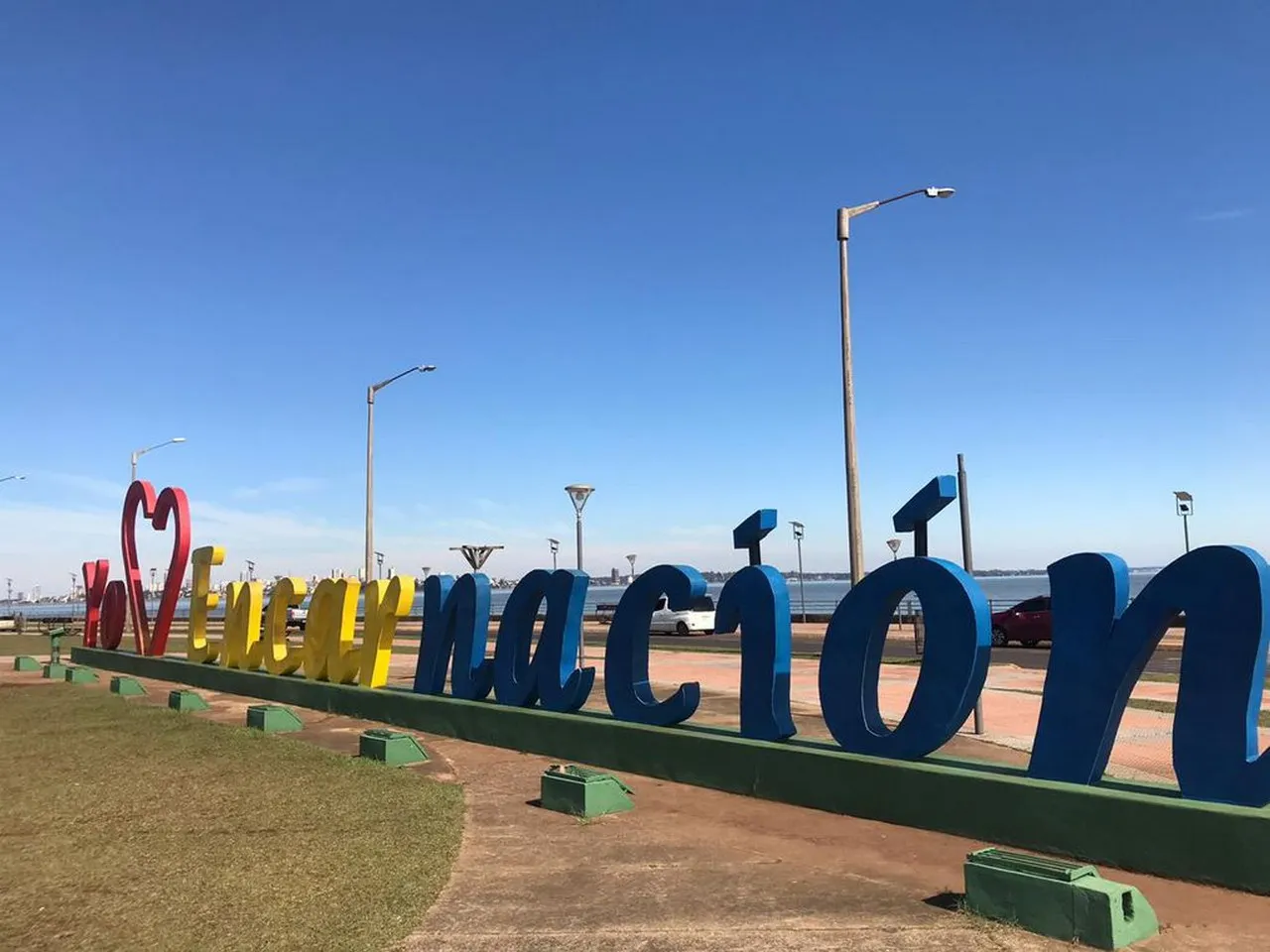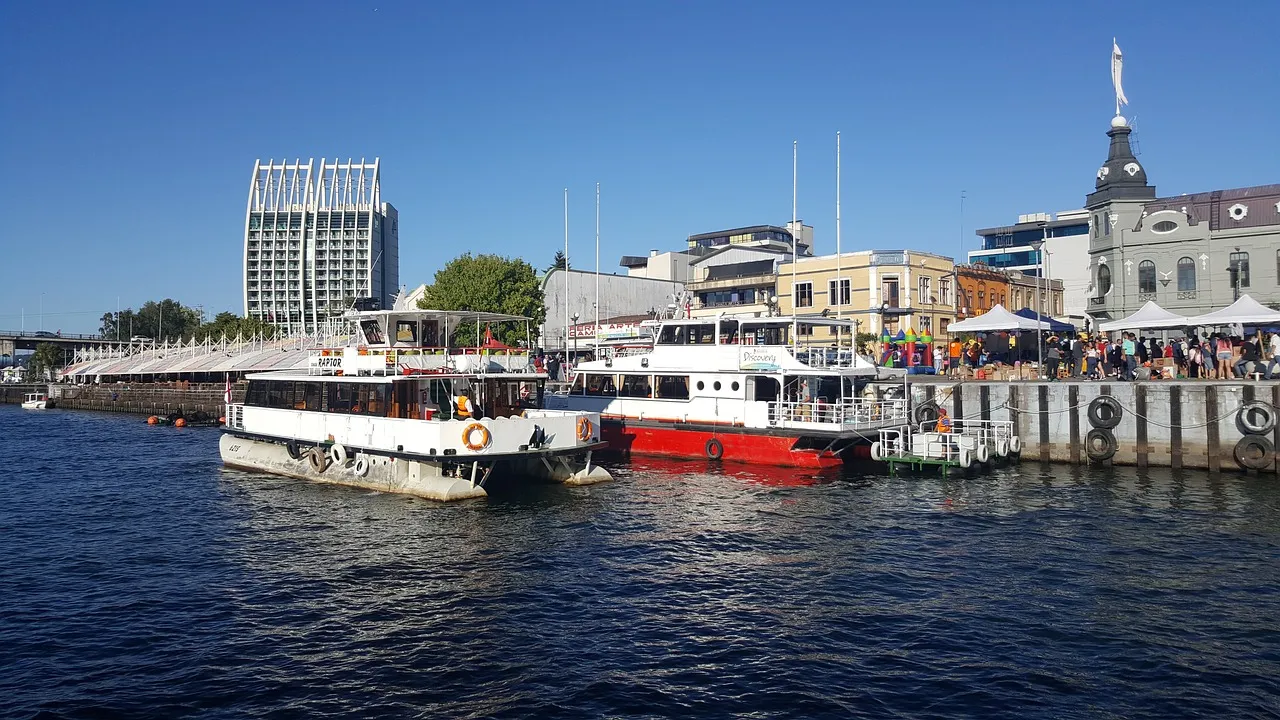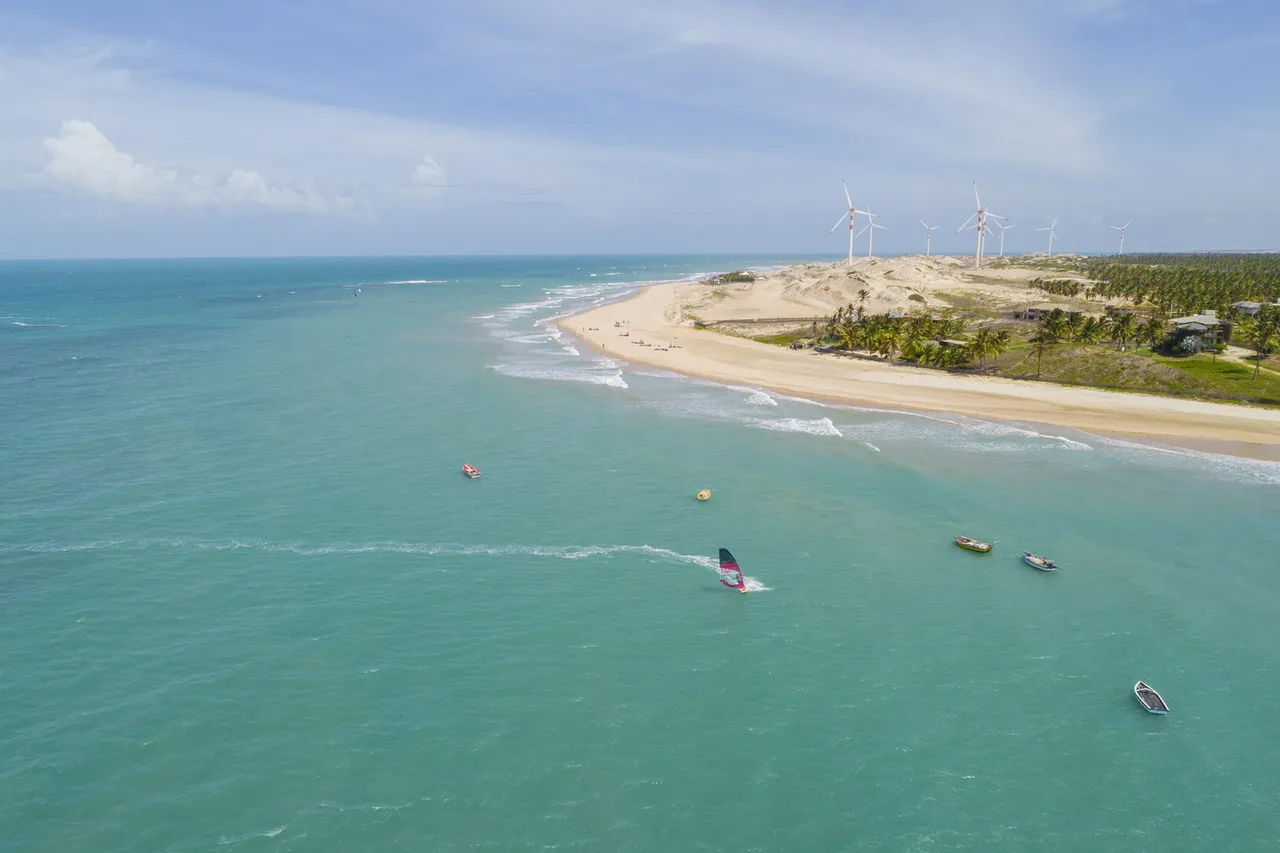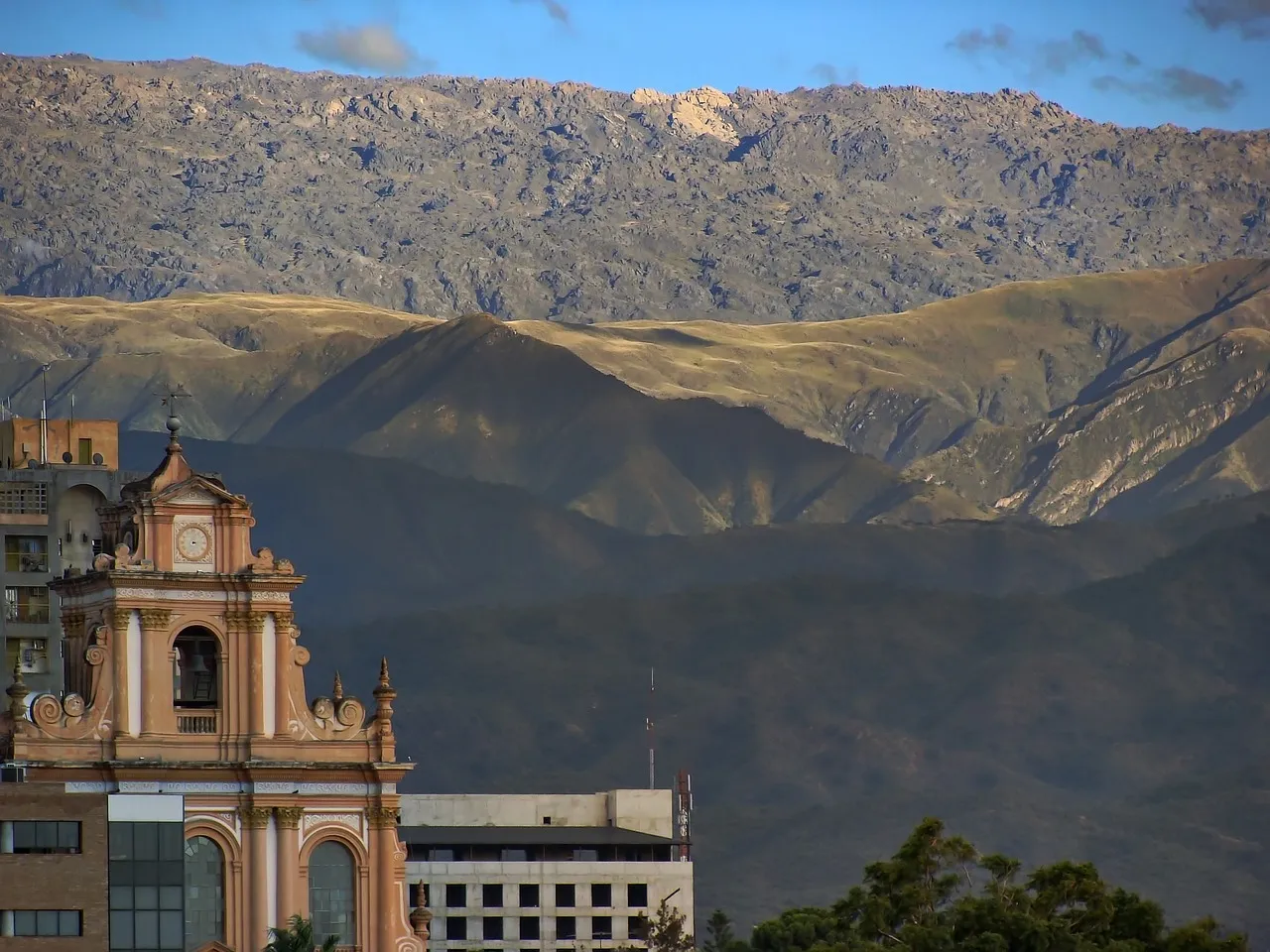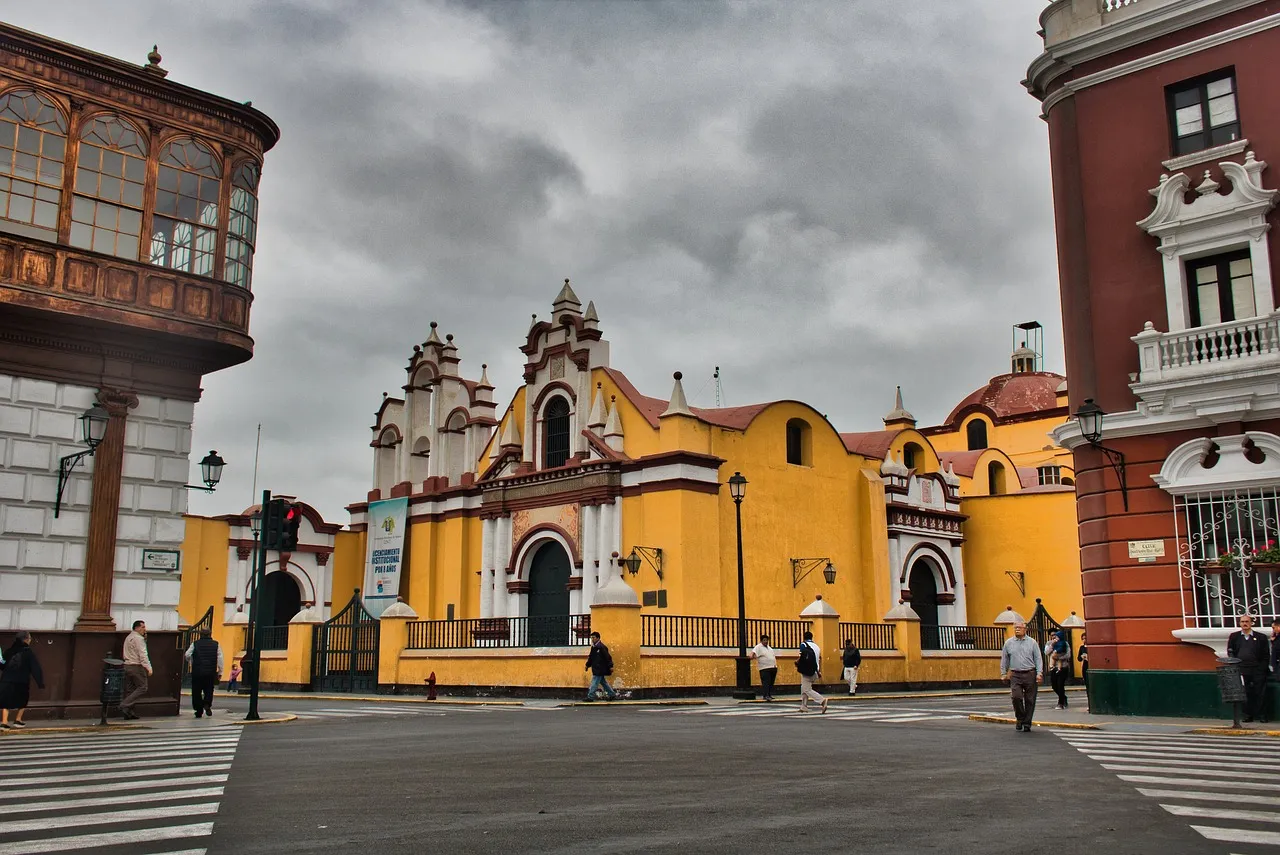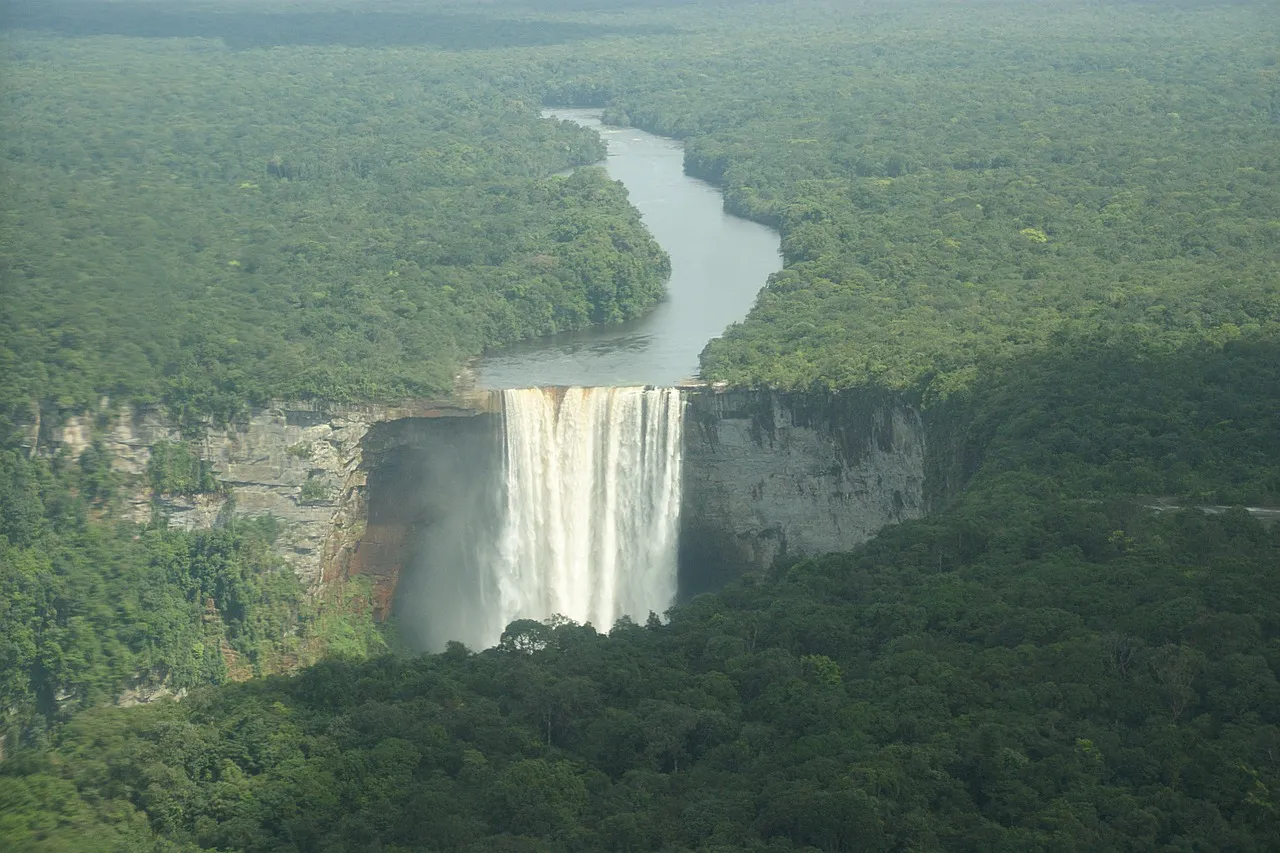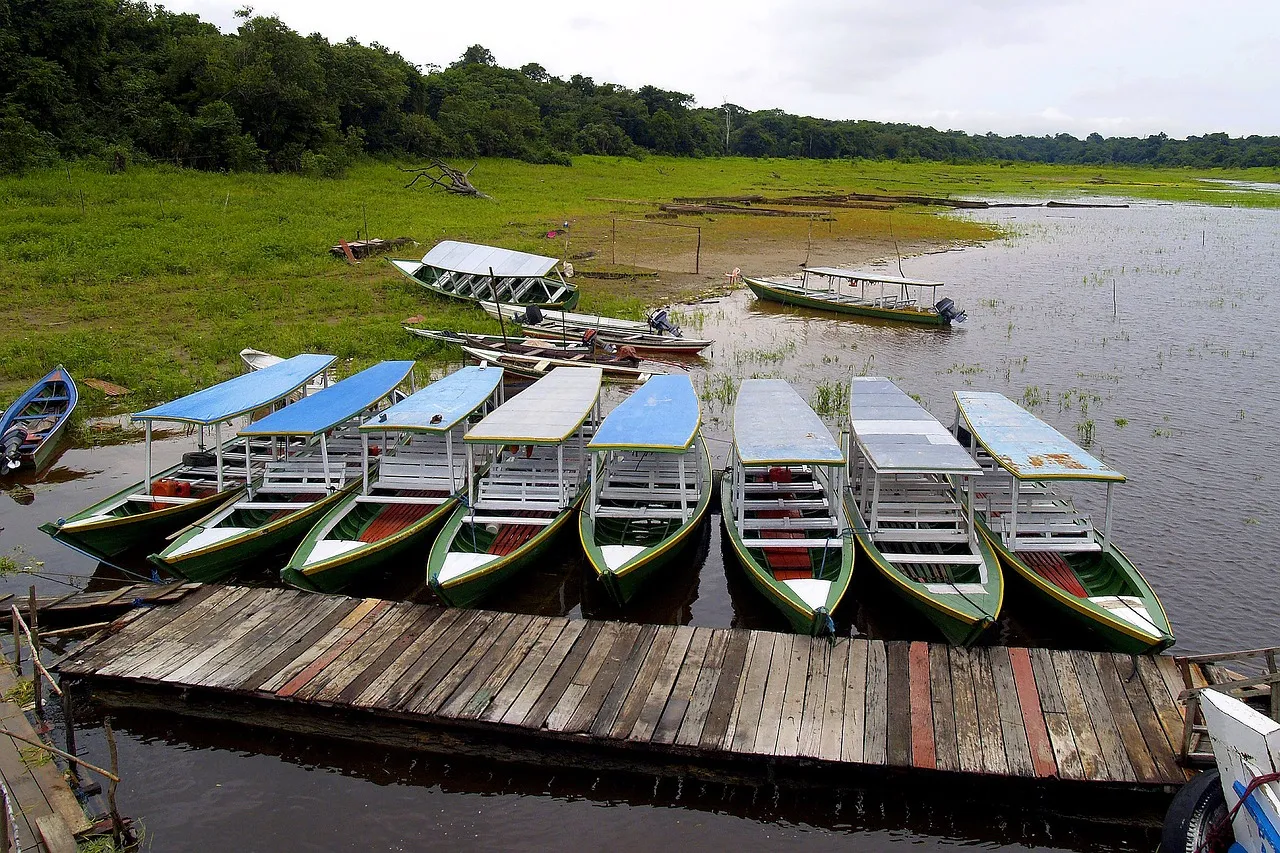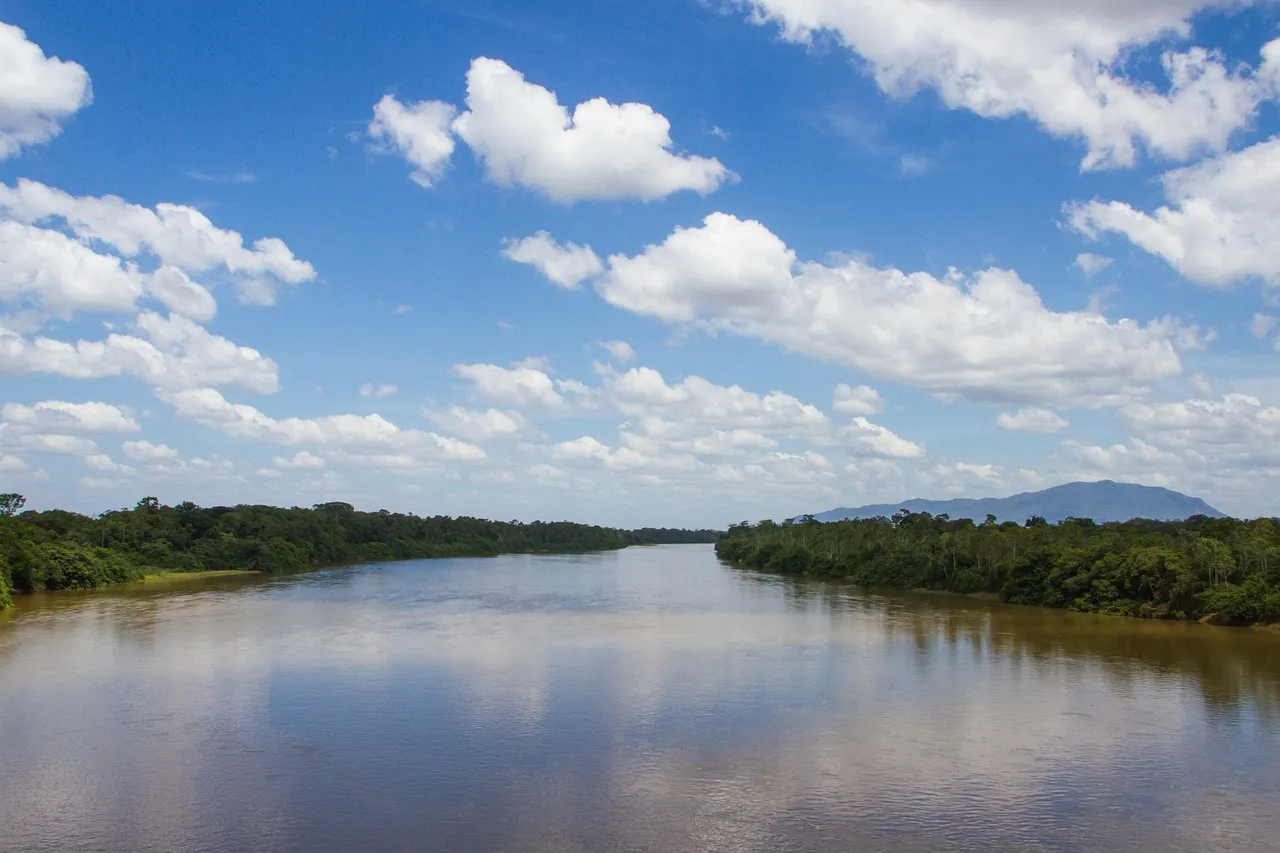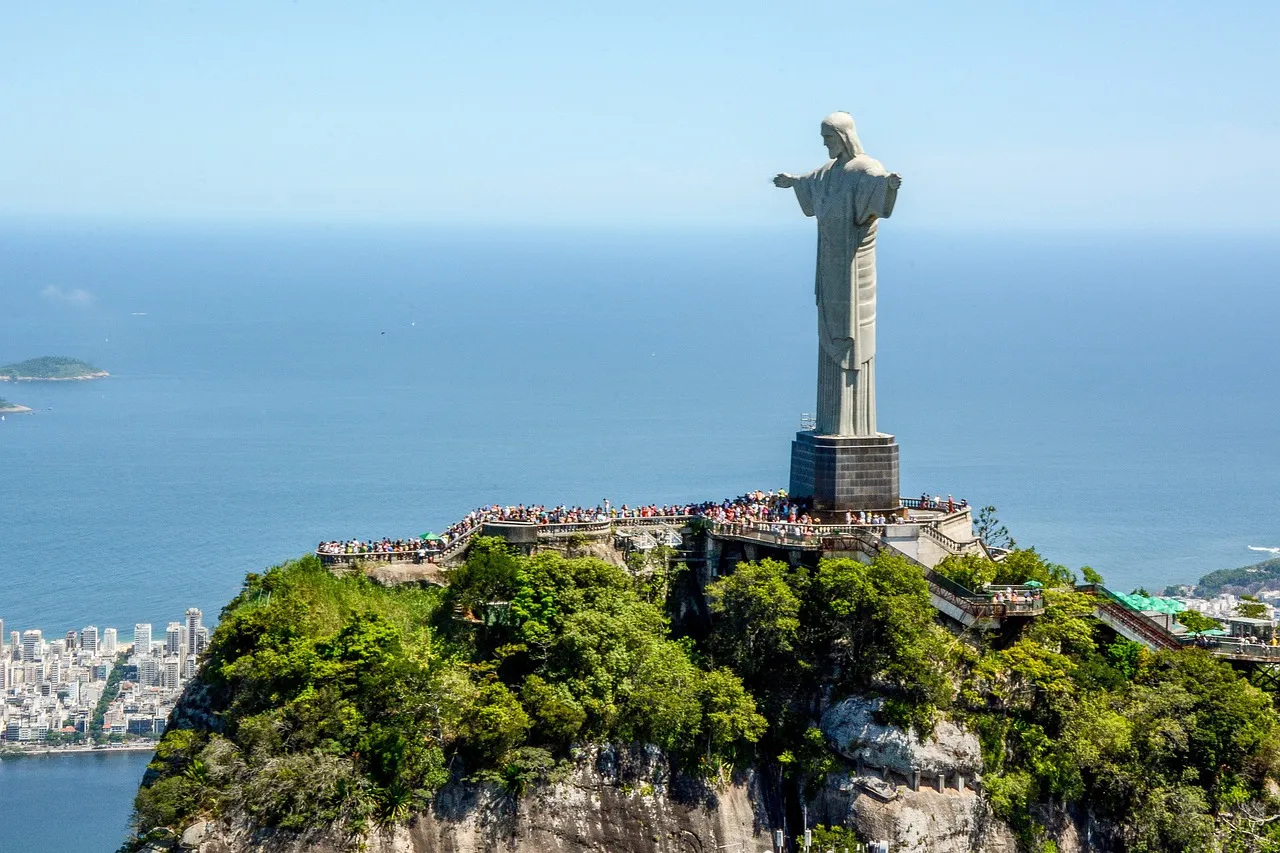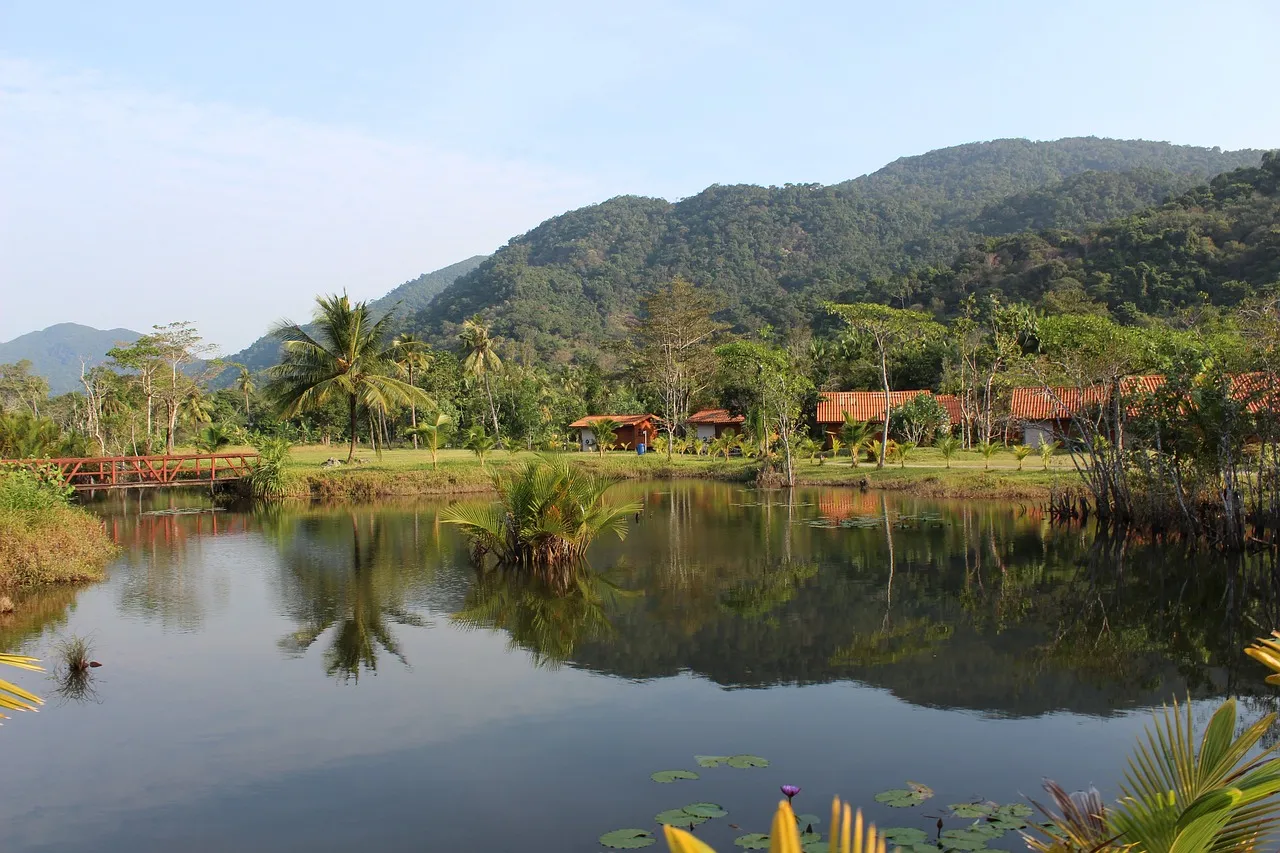In the vast and diverse landscape of South America, beyond the renowned landmarks and tourist hotspots, lies a treasure trove of lesser-known destinations waiting to be unveiled. These are the hidden corners, untouched by the mainstream travel narrative, where authenticity thrives, and the true essence of the continent reveals itself. From tucked-away villages in the Andes to pristine beaches along the Pacific, these lesser-known destinations are the unsung heroes of South American travel. Each has its own unique story to tell, contributing to the rich mosaic that makes this part of the world so captivating.
I. Lesser-known destinations in South America
As a content writer delving into the exploration of lesser-known destinations in South America, the allure lies not only in the destinations themselves but in the spirit of off-the-beaten-path exploration. There’s a particular joy in wandering through streets untouched by tourist crowds, where every cobblestone tells a tale, and the authenticity of local life unfolds before your eyes. It’s about more than just ticking items off a bucket list; it’s about forging genuine connections with the landscapes and communities that are often overlooked. This journey of discovering hidden gems is an invitation to embrace the thrill of the unexpected, to revel in the joy of unscripted adventures, and to redefine the essence of exploration beyond the boundaries of the familiar. So, let’s embark together on this voyage into the lesser-known destinations of South American hidden treasures, where the true magic lies in the uncharted and the unconventional.
II. Uruguay: Colonia del Sacramento – A Timeless Journey Through History
Embarking on a voyage to Colonia del Sacramento feels like stepping into a living canvas where time has gracefully stood still. My personal exploration of this UNESCO World Heritage Site left an indelible mark, and it’s a narrative I’m eager to share with fellow enthusiasts of history, architecture, and cultural fusion.
A. Historical Charm of the UNESCO World Heritage Site
Colonia del Sacramento unfolds like an ancient storybook, its chapters penned by indigenous tribes, Portuguese settlers, Spanish conquistadors, and even a brief stint under British rule. Designated as a UNESCO World Heritage Site in 1995, the town proudly wears the badge of historical significance. It’s a place where every cobblestone whispers tales of the past, and the timeworn structures echo the legacy of the diverse civilizations that once called it home.
B. Cobblestone Streets and Spanish Colonial Architecture
As I navigated the labyrinthine cobblestone streets, the allure of Spanish colonial architecture became an immersive experience. The remnants of the 17th-century plaza, the weathered facades of houses, and the iconic lighthouse standing guard over the Rio de la Plata—all echo the architectural symphony that defines Colonia. Each step resonated with the echoes of bygone eras, and the city’s well-preserved colonial charm painted a vivid picture of life centuries ago.
C. Unique Blend of Portuguese and Spanish Influences
Colonia del Sacramento’s unique allure lies in its architectural duality, reflecting both Portuguese and Spanish influences. The Barrio Histórico, with its winding streets and pastel-colored houses, is a testament to Portuguese rule. In contrast, the Plaza Mayor and its surroundings showcase the Spanish imprint. The blending of these influences creates a harmonious tapestry that captivates visitors, offering a rare glimpse into the nuanced history of this picturesque town.
In conclusion, my journey through Colonia del Sacramento was a poetic dance between the past and the present. It’s a place where every corner reverberates with the footsteps of explorers from different epochs, and the walls breathe the essence of a rich, shared history. Colonia del Sacramento is not just a destination; it’s a living museum inviting all who wander its streets to be a part of its timeless narrative.
III. Bolivia: Sucre – A Journey through Time in the White City
Venturing into Sucre, the symbolic heart of Bolivia, is akin to stepping into a canvas painted with layers of history, culture, and vibrant traditions. My personal sojourn through Sucre became an odyssey into the intricate tapestry of its rich colonial legacy and the pulsating life of its indigenous roots.
A. The White City’s Rich Colonial History
Sucre, often referred to as the White City, unfolds its story in the immaculate whitewashed facades that line its streets. As Bolivia’s constitutional capital, Sucre served as the epicenter of the nation’s fight for independence. The city’s colonial architecture, showcased in gems like the Sucre Cathedral and Casa de la Libertad, preserves the legacy of Spanish influence. Strolling through its historic streets, I marveled at the architectural grandeur that whispered tales of a bygone era.
B. Indigenous Traditions and Culture
While Sucre proudly wears the vestiges of its colonial past, it’s also a vibrant canvas where indigenous traditions find expression. The city pulsates with the beat of folk music, colorful markets, and traditional festivals that celebrate the diversity of Bolivia’s cultural mosaic. My encounter with indigenous artisans in Plaza 25 de Mayo was a testament to Sucre’s commitment to preserving and embracing its multifaceted heritage.
C. Exploring the Historic Center and Plaza 25 de Mayo
The Historic Center of Sucre, a UNESCO World Heritage Site, unfolds like an open-air museum, beckoning visitors to traverse its cobblestone streets. The central hub, Plaza 25 de Mayo, serves as Sucre’s beating heart. Flanked by colonial-era buildings and adorned with lush gardens, the plaza is a microcosm of Sucre’s identity. From the impressive Metropolitan Cathedral to the freedom-evoking statue of Antonio José de Sucre, the square encapsulates the city’s essence.
In conclusion, Sucre, with its harmonious blend of colonial magnificence and indigenous vitality, stands as a living testament to Bolivia’s rich cultural amalgamation. My journey through the White City was not just a stroll through historical landmarks; it was an immersion into the soul of a nation, where past and present seamlessly intertwine, creating a vibrant tapestry that narrates the story of Sucre’s enduring charm.
IV. Ecuador: Cuenca – A Cultural Tapestry Unraveled by the Tomebamba
Embarking on a journey to Cuenca, the artistic and cultural hub of Southern Ecuador, is akin to stepping into a canvas painted with the hues of history and creativity. My own expedition through this UNESCO World Heritage Site left an indelible mark as I delved into the well-preserved architecture and meandered along the banks of the Tomebamba River.
A. Artistic and Cultural Hub of Southern Ecuador
Cuenca, nestled amidst the Andean highlands, exudes an artistic aura that permeates its every alley. Home to countless galleries, studios, and vibrant markets, the city is a haven for those seeking an authentic cultural experience. My exploration led me through the cobblestone streets adorned with colorful murals, where I encountered artisans breathing life into their creations, making Cuenca a melting pot of creativity.
B. UNESCO World Heritage Site with Well-Preserved Architecture
Cuenca wears its heritage with pride, evident in the meticulously preserved architecture that earned it a UNESCO World Heritage designation. Colonial churches, such as the iconic Catedral Nueva and the captivating Catedral Vieja, stand as architectural masterpieces, narrating tales of Spanish influence. Wandering through the city’s historic center, I marveled at the colonial mansions and plazas that seamlessly blend with the modern energy of Cuenca.
C. Exploring the Tomebamba River and El Barranco
The Tomebamba River, a lifeline that courses through the heart of Cuenca, offers a serene backdrop to the city’s bustling vibrancy. My leisurely stroll along El Barranco, a picturesque trail flanking the river, provided glimpses of the city’s soul. Colonial bridges, like the Puente Roto, gracefully span the river, connecting the historic district with the neighborhoods on the opposite bank. The scenic blend of nature and urbanity along the Tomebamba encapsulates Cuenca’s allure.
In essence, Cuenca stands as a testament to Ecuador’s cultural richness, where art, history, and nature converge. My journey through this Andean jewel was not just a sightseeing expedition; it was an immersion into a city that weaves its tales through cobblestone streets, vibrant markets, and the gentle flow of the Tomebamba—a city that invites exploration with every step, revealing layers of history and creativity waiting to be discovered.
V. Colombia: San Agustin – Unveiling the Mysteries of Ancient Statues
Embarking on a journey to San Agustin, Colombia, is like stepping into a realm where time stands still, and the secrets of a pre-Columbian civilization come to life. My own odyssey through this archaeological wonderland was a mesmerizing experience, as I delved into the enigmatic treasures of ancient statues, explored the breathtaking landscapes of the Huila Region, and forged connections with the indigenous communities that call this mystical place home.
A. Archaeological Treasures and Ancient Statues
San Agustin is a sanctuary of archaeological marvels, where the remnants of an ancient civilization reveal a profound connection between art, spirituality, and history. The Archaeological Park of San Agustin, a UNESCO World Heritage Site, houses hundreds of stone statues carved with intricate details, each telling a silent tale of the rituals, beliefs, and life of a civilization lost to time. As I stood among these silent sentinels, I couldn’t help but marvel at the artistic prowess that transcended centuries.
B. Scenic Landscapes of the Huila Region
Nestled amidst the rolling hills of the Huila Region, San Agustin unfolds its beauty against a backdrop of lush landscapes and winding rivers. The panoramic vistas, with the Magdalena River meandering through the valleys, offer a visual feast that complements the cultural richness of the region. My journey took me through verdant trails, where every step felt like a communion with nature, enhancing the overall tapestry of the San Agustin experience.
C. Engaging with Local Indigenous Communities
Beyond the archaeological wonders and scenic landscapes, San Agustin invites travelers to engage with the vibrant tapestry of indigenous communities that inhabit the region. The warmth of the local people, their traditions, and the echoes of ancient folklore enrich the travel experience. Whether participating in traditional ceremonies or sharing stories around a communal fire, connecting with the indigenous communities adds a layer of authenticity to the exploration of San Agustin.
In conclusion, San Agustin is a testament to Colombia’s cultural and historical diversity, offering a captivating blend of archaeological wonders, breathtaking landscapes, and meaningful encounters with local communities. My journey through this hidden gem was not just a voyage into the past but a holistic experience that immersed me in the beauty, mystery, and cultural richness of this Colombian treasure.
VI. Paraguay: Encarnación – Unveiling Tranquility on the Paraná River
Nestled along the serene banks of the Paraná River, Encarnación in Paraguay is a hidden gem that whispers tales of a rich past and embraces the vibrancy of modernity. My own sojourn through this lesser-known destination was a delightful discovery, as I wandered through the hauntingly beautiful Jesuit ruins, marveled at the modern architectural wonders along the Costanera de la Ciudad, and immersed myself in the cultural legacy that defines Encarnación.
A. The Lesser-Known Gem on the Paraná River
Encarnación, often overlooked in the shadow of its more prominent South American neighbors, is a tranquil haven waiting to be explored. The city’s unhurried pace and welcoming atmosphere create an ideal setting for those seeking an off-the-beaten-path experience. Strolling along its riverfront promenades, I found a sense of calm that set Encarnación apart as a destination where time takes a back seat, allowing visitors to savor each moment.
B. Jesuit Ruins of Trinidad and Jesús
Immersing myself in the rich history of Encarnación led me to the awe-inspiring Jesuit ruins of Trinidad and Jesús. These UNESCO World Heritage Sites stand as poignant reminders of the region’s colonial past, where the Jesuit missions flourished. The intricately carved stone facades and the echoes of bygone prayers create an ethereal ambiance that transports visitors to a different era, offering a glimpse into the cultural amalgamation that shaped Paraguay.
C. Modern Architecture and the Costanera de la Ciudad
Encarnación seamlessly intertwines its historical roots with modernity, as evidenced by the striking architecture along the Costanera de la Ciudad. The waterfront district, adorned with contemporary structures, presents a visual symphony that complements the city’s evolution. As I strolled along the Costanera, the juxtaposition of old and new became a metaphor for Encarnación’s resilience and its embrace of change while preserving its cultural identity.
In conclusion, Encarnación stands as a testament to the enchanting allure of hidden gems along the Paraná River. My journey through this Paraguayan treasure was a harmonious blend of tranquility, historical exploration, and architectural marvels. Encarnación invites travelers to step off the well-trodden path, offering a sanctuary where the past and present harmonize, creating an unforgettable and authentic South American experience.
VII. Chile: Valdivia – A Symphony of Nature, Heritage, and Craftmanship
Nestled in a picturesque embrace of rivers and forests, Valdivia in Chile is a canvas painted with the vibrant hues of nature and cultural richness. My own journey through this enchanting city was a revelation, as I wandered through its lush landscapes, savored the echoes of German influence in both architecture and cuisine, and uncovered the historical tales held within the walls of Niebla Fort and the local craft breweries.
A. Picturesque City Surrounded by Rivers and Forests
Valdivia’s allure lies in its natural splendor, a city adorned by the meeting of rivers and the lush greenery that envelopes its surroundings. The calm flow of the Calle-Calle and Cruces rivers, which cradle the city, invites visitors to immerse themselves in the tranquility of their waters. The vibrant flora, combined with the fresh scent of the forests, creates an ambiance where every street seems like a passage through a living, breathing garden.
B. German Influence in Architecture and Cuisine
Valdivia wears its history on its sleeves, with a distinct German influence evident in both its architectural charm and culinary offerings. The legacy of German settlers is etched in the ornate facades of buildings, the red-roofed houses, and the quaint cobblestone streets. The culinary scene mirrors this influence, offering a delightful fusion of flavors that blend traditional Chilean dishes with the hearty goodness of German fare. From artisan bakeries to cozy beer gardens, Valdivia beckons with a delectable journey for the palate.
C. The Historic Niebla Fort and Local Craft Breweries
Stepping back in time, I explored the historic Niebla Fort, a sentinel standing against the currents of history. The fort’s robust walls narrate tales of battles and resilience, providing a glimpse into Chile’s maritime history. Transitioning to the present, Valdivia’s craft breweries stood as living testaments to the city’s dynamic spirit. Tapping into the burgeoning craft beer culture, these local establishments craft brews that capture the essence of Valdivia, marrying tradition with innovation.
In essence, Valdivia is a symphony composed of the melodies of nature, the harmonies of cultural influences, and the rhythms of historical tales. My visit to this Chilean gem was a sensory journey, where the rustling leaves, the flavors on my plate, and the echoes of history converged to create an experience that lingered long after I left. Valdivia invites travelers to explore its multifaceted charm, promising an adventure where every moment is a note in the symphony of discovery.
VIII. Brazil: Jericoacoara – A Hidden Eden of Sand, Sea, and Adventure
In the northeastern state of Ceará, Brazil, lies a remote beach paradise that seems plucked from dreams—Jericoacoara. My journey to this hidden gem was a revelation, a rendezvous with a landscape where pristine sands meet azure waters, and the thrill of windsurfing and kitesurfing dances in harmony with nature’s rhythm.
A. Remote Beach Paradise in Ceará
Jericoacoara, affectionately known as “Jeri” by locals, is a haven tucked away from the hustle and bustle. Accessible only by off-road vehicles due to its remote location, getting to Jeri is an adventure in itself. Once there, the untouched beauty of this coastal retreat unfolds—a stretch of golden sands caressed by the Atlantic breeze, a testament to the unspoiled wonders that nature can craft.
B. Sand Dunes, Lagoons, and Unique Natural Formations
The geography of Jericoacoara is a showcase of nature’s artistry. Immense sand dunes, shifting and sculpted by the wind, create a mesmerizing landscape that stretches to meet the horizon. Hidden within these dunes are crystalline lagoons, where the refreshing waters invite travelers to cool off in the embrace of pristine nature. The Pedra Furada, a natural stone arch sculpted by the elements, stands as a silent witness to the passage of time, adding a touch of mystique to the already enchanting scenery.
C. Windsurfing and Kitesurfing Hotspot
For thrill-seekers and water sports enthusiasts, Jericoacoara is a playground of possibilities. The consistent and steady winds that sweep across its shores make it a world-renowned destination for windsurfing and kitesurfing. The Jeri dunes also offer the perfect vantage point to witness the kaleidoscope of colors painting the sky during the sunset, a breathtaking spectacle that crowns a day filled with adventure.
Jericoacoara is more than a destination; it’s an immersive experience where the simplicity of life by the sea meets the thrill of exploration. As the sun dips below the horizon and the stars emerge, Jeri casts its spell, inviting travelers to embrace its tranquil beauty. My own sojourn in Jericoacoara was a chapter of serenity and exhilaration, a testament to the wonders that unfold when you venture off the beaten path in search of nature’s hidden treasures.
IX. Argentina: Salta – Where Colonial Elegance Meets Andean Splendor
Nestled in the embrace of the Andean foothills, Salta, Argentina, beckons with a timeless allure that seamlessly blends colonial grandeur, traditional rhythms, and natural wonders. My exploration of this captivating city was akin to stepping into a living history book, where each cobblestone street told tales of a bygone era, and the surrounding landscapes painted an ever-changing canvas of awe-inspiring beauty.
A. Colonial Architecture in the Andean Foothill
Salta’s heart beats in the rhythm of its colonial architecture, a testament to its rich history. As I wandered through the Plaza 9 de Julio, the city’s main square, I was surrounded by architectural gems—majestic cathedrals, the neoclassical Salta Cabildo, and the iconic pink façade of the Salta Cathedral. Each step felt like a journey back in time, with the Andean peaks standing sentinel in the background, framing a city that effortlessly merges the old and the new.
B. Traditional Peñas and Folk Music
To truly immerse myself in the spirit of Salta, I ventured into the world of “peñas,” traditional folk music gatherings. These intimate venues pulsate with the soul-stirring melodies of Argentine folklore, performed live by talented musicians. The peñas offer a unique opportunity to connect with the heart of Salta’s cultural heritage, where locals and visitors alike become part of a shared experience, clapping hands and swaying to the enchanting tunes.
C. The Train to the Clouds and Quebrada de Cafayate
Salta’s allure extends beyond its urban charm. Embarking on the legendary Tren a las Nubes, or the Train to the Clouds, was a journey into the clouds indeed, traversing breathtaking landscapes of deep canyons, high-altitude deserts, and winding mountain routes. The nearby Quebrada de Cafayate, a surreal desert canyon, captivated me with its kaleidoscope of colors—striated rock formations, vibrant reds, and earthy hues that seemed to shift with the changing light.
Salta, for me, was a sensory feast—an exploration of architectural marvels, a dance to the beats of folk music, and a communion with nature’s grandeur. The city’s essence lies not just in its picturesque streets but in the stories etched in its walls, the melodies resonating in its alleys, and the vistas that unfold as you venture into the surrounding Andean landscapes. My sojourn in Salta remains a cherished chapter, a reminder that hidden gems often reveal themselves in the embrace of historical grandeur and natural wonders.
X. Peru: Trujillo – Unveiling Ancient Mysteries in the Archaeological Capital
Trujillo, the crown jewel of Peru’s north, is a city that cradles the echoes of ancient civilizations within its modern embrace. As I stepped onto its historic streets, I was entranced by the palpable connection between the past and the present, where the Archaeological Capital of Peru beckons explorers to unravel the mysteries of the Moche and Chimu cultures.
A. Archaeological Capital of Peru’s North
Trujillo wears its title proudly as the Archaeological Capital, a designation earned through its rich tapestry of archaeological sites that dot the landscape. The city serves as a gateway to the ancient wonders that lie in the surrounding desert, inviting curious travelers to embark on a journey through time.
B. Moche Temples and Ancient Ruins
Venturing into the outskirts of Trujillo, I found myself standing before the awe-inspiring Moche Temples of the Sun and Moon. These monumental structures, adorned with intricate murals and vivid reliefs, whispered tales of a civilization that thrived centuries ago. Exploring the sprawling archaeological complex of Chan Chan, the capital of the Chimu Kingdom, added another layer to my journey, revealing the advanced engineering and artistic prowess of these ancient cultures.
C. The Vibrant Colonial Center and Plaza de Armas
Trujillo’s allure extends beyond its archaeological treasures to the heart of its colonial center, a vibrant showcase of Spanish influence and local charm. The Plaza de Armas, surrounded by colorful colonial buildings, became my sanctuary for absorbing the city’s energy. From here, I embarked on strolls through the cobbled streets, each corner unveiling a blend of architectural splendor and the warmth of the local culture.
Trujillo, for me, was more than a city; it was a portal to Peru’s enigmatic past. The juxtaposition of archaeological marvels against the backdrop of a lively colonial center created a narrative that transcended time. As the desert winds whispered stories of ancient civilizations, and the vibrant present unfolded in the heart of Trujillo, I marveled at the seamless coexistence of history and modernity—a testament to the city’s role as the Archaeological Capital, where each step echoes the footsteps of those who came before.
XI. Guyana: Kaieteur Falls – A Symphony of Nature’s Grandeur in the Heart of the Rainforest
Guyana, a hidden gem in South America, cradles one of the world’s most magnificent natural wonders—the awe-inspiring Kaieteur Falls. As I stood on the edge of the Pakaraima Plateau, my senses were overwhelmed by the sheer power and beauty that unfolded before me. Kaieteur Falls, a testament to the raw majesty of nature, emerges as a must-see destination for those seeking remote and untouched beauty.
A. Majestic Waterfalls in the Heart of the Rainforest
Kaieteur Falls, nestled in the heart of the pristine rainforest, is a spectacle that transcends description. The mighty Potaro River takes a daring plunge of 741 feet, creating a cascade that mesmerizes all who witness it. The roar of the falls reverberates through the lush greenery, creating an orchestral symphony composed by nature itself.
B. Remote and Untouched Natural Beauty
What sets Kaieteur Falls apart is its untouched grandeur. Unlike more accessible waterfalls, Kaieteur remains a hidden treasure, challenging the intrepid traveler to embark on a journey through the rainforest’s embrace. The sense of remoteness adds to its allure, creating an authentic and unspoiled experience that leaves an indelible mark on the adventurous soul.
C. Indigenous Communities and Ecotourism
Exploring Kaieteur goes beyond witnessing a natural spectacle; it involves engaging with the indigenous communities that call this pristine wilderness home. The journey to the falls often includes encounters with local tribes, offering a glimpse into their rich cultural tapestry. This ecotourism approach ensures that the marvels of Kaieteur Falls contribute positively to the well-being of the surrounding communities.
Guyana, with Kaieteur Falls at its heart, beckons those seeking a communion with nature in its purest form. The adventure of reaching this remote paradise is a testament to the rewards that await—majestic waterfalls framed by the untouched beauty of the rainforest, and a cultural tapestry woven by the indigenous communities. Kaieteur Falls stands not just as a natural wonder but as a beacon for those who dare to explore the uncharted territories where the symphony of nature plays its most enchanting notes.
XII. Exploring the Amazon: Leticia, Colombia – A Gateway to Pristine Wilderness and Cultural Riches
In the heart of the Colombian Amazon lies a hidden gem, the bustling town of Leticia, beckoning adventurers to embark on a journey into the heart of the world’s largest rainforest. My own expedition to Leticia was a doorway to an untouched realm where the symphony of nature harmonizes with vibrant indigenous cultures and the mighty Amazon River.
A. Gateway to the Colombian Amazon
Leticia, with its vibrant energy, serves as the perfect gateway to the Colombian Amazon. Nestled where Colombia meets Brazil and Peru, this town is not just a starting point but a cultural crossroads. The streets hum with the rhythm of the Amazon, inviting travelers to explore its dense jungles, hidden oxbow lakes, and ancient pathways.
B. Biodiversity, Indigenous Culture, and River Expeditions
The biodiversity that envelops Leticia is nothing short of astounding. As I ventured into the Amazon rainforest, guided by the echoes of exotic birdcalls and the rustling of unseen creatures, the richness of the ecosystem unfolded. River expeditions revealed hidden lagoons and mystical tributaries, while encounters with indigenous communities offered a profound insight into their deep connection with the rainforest.
C. Tri-border Area with Brazil and Peru
Leticia’s uniqueness lies in its location at the tri-border area, creating a cultural mosaic where Colombia, Brazil, and Peru converge. The vibrant colors of the markets, the aroma of traditional Amazonian dishes, and the sounds of indigenous languages blend seamlessly. Crossing borders on the Amazon River, I found myself immersed in a tapestry of diverse traditions, a testament to the interconnectedness of the Amazonian peoples.
Leticia, for me, was not just a destination; it was an immersion into a world where nature and culture coalesce in a dance as old as time. The dense foliage echoed with the stories of ancient civilizations, and the Amazon River flowed as a lifeline connecting communities across borders. Leticia, as the doorway to this extraordinary realm, remains etched in my memory as a place where the Amazon’s wild embrace and the warmth of indigenous hospitality create an unparalleled adventure, reminding us that in the heart of the rainforest, every step is a journey into the extraordinary.
XIII. Practical Tips for Exploring Lesser-Known Destinations – Navigating the Uncharted with Finesse
Embarking on a journey to lesser-known destinations is akin to opening a treasure chest of unique experiences, but it requires a blend of preparation and cultural finesse. Drawing from my own escapades into the uncharted, here are some practical tips to ensure your exploration is not just memorable but respectful and smooth.
A. Transportation Considerations
Navigating the roads less traveled often demands a nuanced understanding of local transportation. From winding mountain paths to secluded coastal routes, each destination comes with its own set of challenges. During my foray into lesser-known regions, I discovered the significance of flexibility. Embrace local modes of transport, be it a shared minivan, a rickety bus, or a scenic train. Engaging with locals for transportation insights not only unveils hidden gems but ensures a more authentic travel experience.
B. Cultural Sensitivity and Respectful Travel Practices
Respecting local customs and traditions is paramount when treading on the lesser-known trail. From remote villages to vibrant town squares, my journey taught me the importance of cultural sensitivity. Before venturing into these destinations, take the time to familiarize yourself with local customs, dress codes, and social norms. Engage in genuine conversations, ask permission before taking photographs, and embrace the pace of local life. It’s not just about being a spectator; it’s about becoming a respectful participant in the cultural tapestry.
C. Unique Accommodations and Local Guidance
In the realm of off-the-beaten-path exploration, traditional hotels may not always be the go-to option. Embrace the charm of unique accommodations like homestays, boutique inns, or eco-friendly lodges. During my own travels, these choices not only added a personal touch to my journey but often came with invaluable local insights. Seek guidance from locals; their knowledge can lead you to hidden trails, secret viewpoints, and lesser-known cultural events. Whether it’s a cozy family-run guesthouse or a camping spot with a view, let your accommodations become a part of the adventure.
Exploring lesser-known destinations is not just about reaching a place; it’s about immersing yourself in its soul. As you pack your bags for the road less traveled, remember, it’s the unexpected turns and hidden corners that often hold the most profound revelations. With a spirit of openness, respect, and a knack for the unconventional, your journey into the lesser-known is bound to be a mosaic of extraordinary moments and cultural connections.
XIV. Documenting and Sharing Your Journey: Crafting Chronicles of Hidden Marvels
Embarking on a journey to discover hidden gems is a narrative waiting to be told, and the art of documenting and sharing your experiences is the key to immortalizing those moments. In my own pursuit of capturing the essence of hidden marvels, I’ve found that every photograph, journal entry, and social media post becomes a chapter in the story of exploration.
A. Photography Tips for Capturing Hidden Gems
Photography is more than just a snapshot; it’s a visual journey through the landscapes of your discoveries. As I navigated the nooks and crannies of lesser-known destinations, I learned the importance of patience and observation. Let the natural light guide your lens, capturing the interplay of shadows and highlights in hidden alleyways or reflecting the hues of a vibrant market. Seek unique angles and frames to encapsulate the distinctive charm of each locale. From bustling local markets to serene natural wonders, let your photographs narrate the untold stories of the places you encounter.
B. Keeping a Travel Journal and Blogging Experiences
A travel journal is a canvas for the soul, and blogging is the medium through which you paint the narrative of your journey. In my own exploration of hidden gems, I’ve found that jotting down thoughts in a journal or crafting a blog entry transports me back to the very moments that ignited my curiosity. Share the anecdotes of stumbling upon a tucked-away café or the warmth of interactions with locals. Let your words weave a tapestry of experiences that future travelers can unravel. Your journal becomes not just a personal reflection but a guide for those ready to tread the same hidden paths.
C. Inspiring Fellow Travelers through Social Media
Social media transforms solo adventures into a shared tapestry of global exploration. Embrace platforms like Instagram, Twitter, or Facebook to provide glimpses into the lesser-known corners you’ve uncovered. Each post becomes an invitation for others to dream, discover, and embark on their own journeys. Share not only the picturesque landscapes but the stories behind them. Use your captions to highlight the cultural nuances, the flavors of local cuisine, and the vibrant traditions that define the places you explore. Social media, in this context, becomes a dynamic forum where hidden gems are not just discovered but celebrated collectively.
As you document and share your journey through the lesser-known, remember that you are not just a traveler; you are a storyteller. Your lens, your words, and your posts become an invitation for others to join the narrative of exploration. So, whether you’re framing the perfect shot, penning down reflections, or sharing on social media, each act of documentation becomes a contribution to the vast and ever-evolving story of global discovery.
XV. Conclusion
Our journey through the lesser-known destinations of South America has been an enchanting expedition, uncovering the hidden gems that grace this continent. From the serene beauty of Uruguay’s Cabo Polonio to the cultural tapestry of Colombia’s Villa de Leyva, each destination revealed a distinct facet of South America’s charm. The quaint colonial charm of Sucre, Bolivia, and the natural wonders of Chile’s Chiloe Island were not merely stops on a map but portals to authentic experiences that defy the conventional travel narrative. Together, these lesser-known destinations form a kaleidoscope of diversity, offering a more intimate understanding of the rich cultural, historical, and natural tapestry that South America weaves.
As I conclude this exploration, I extend an invitation to fellow travelers: seek out the hidden gems and embrace the adventure that lies in the undiscovered corners of South America. The allure of off-the-beaten-path exploration isn’t just about the places you’ll visit; it’s about the stories you’ll uncover and the memories you’ll create. Whether it’s the offbeat trails of Argentina’s Salta or the secluded wonders of Guyana’s Kaieteur Falls, there’s a unique joy in venturing beyond the well-trodden routes. Let the spirit of curiosity be your compass, and allow the thrill of the unexpected to guide your travels. South America’s lesser-known destinations are waiting to be your canvas for exploration, promising experiences that transcend the ordinary and redefine the essence of adventure. So, pack your sense of wonder, embark on the road less traveled, and let the hidden gems of South America be your guide to a world of discovery. Safe travels!

